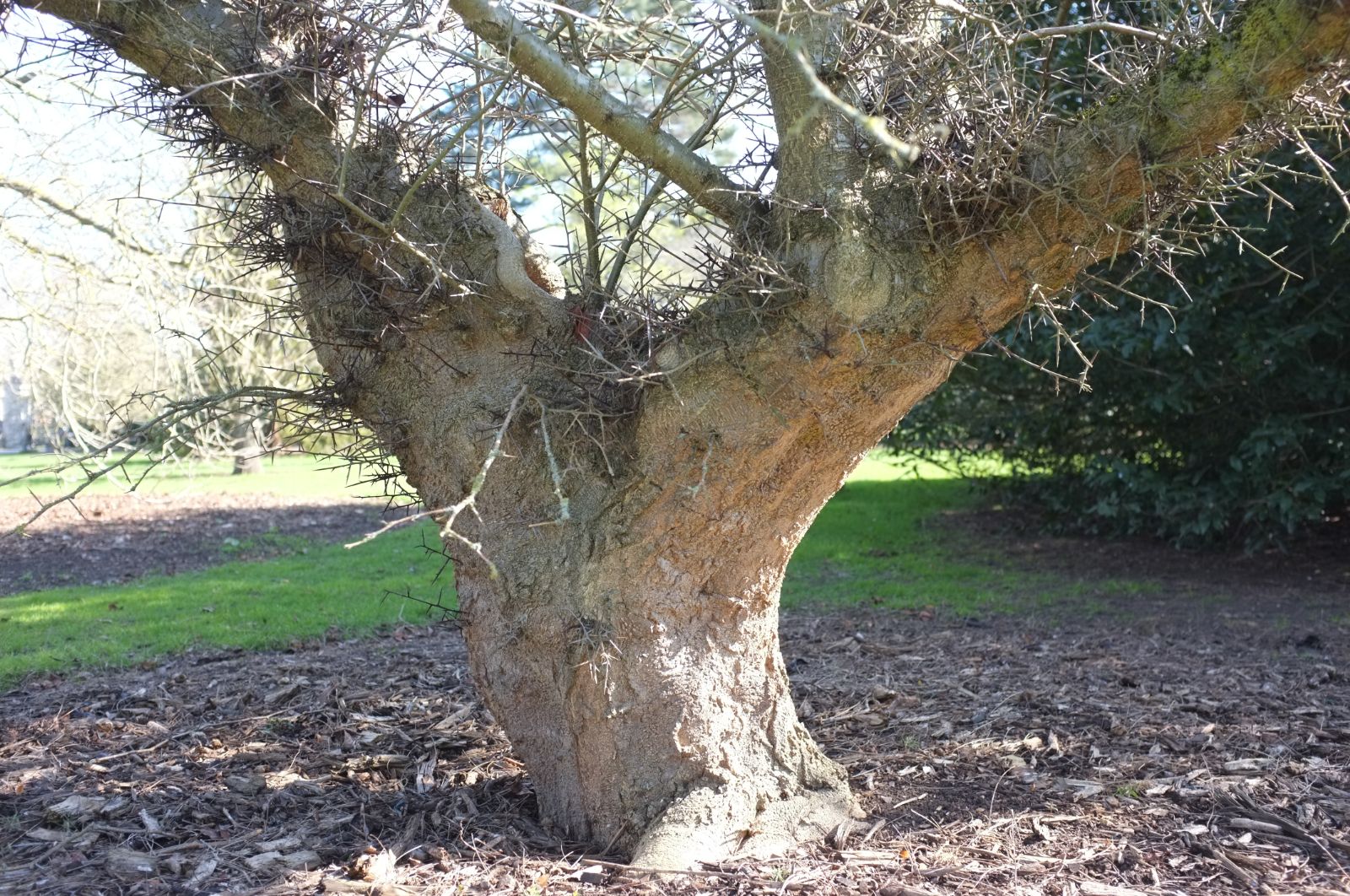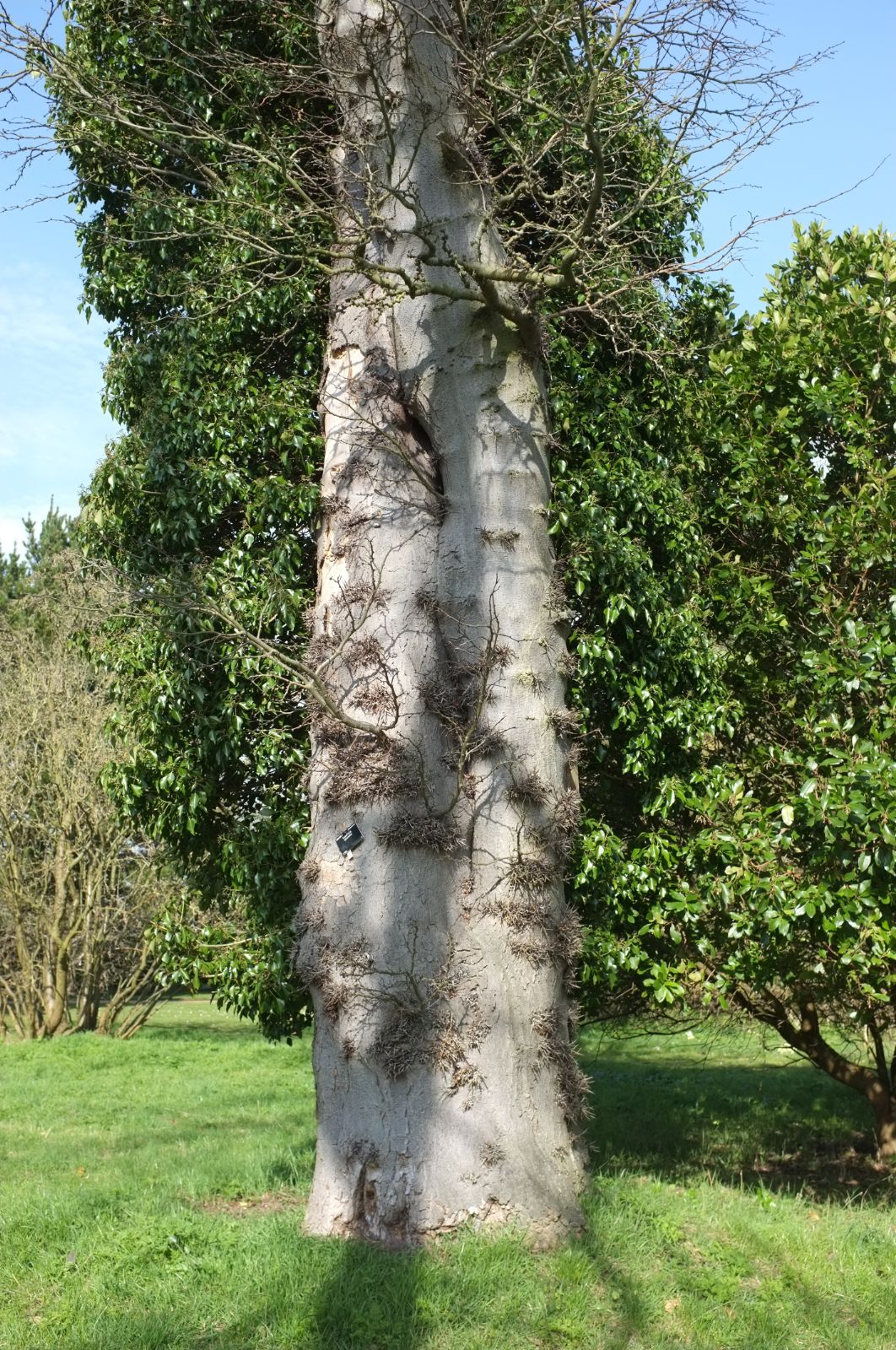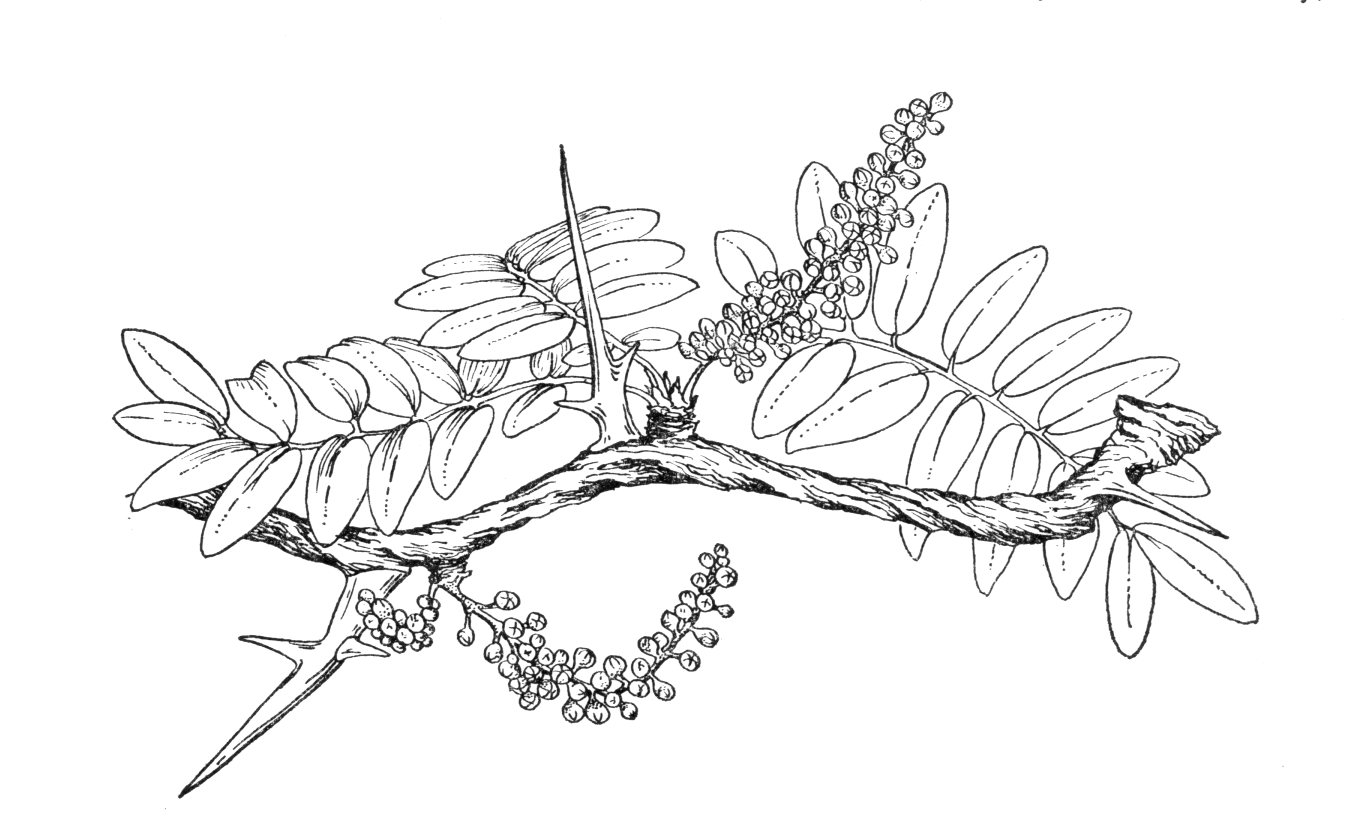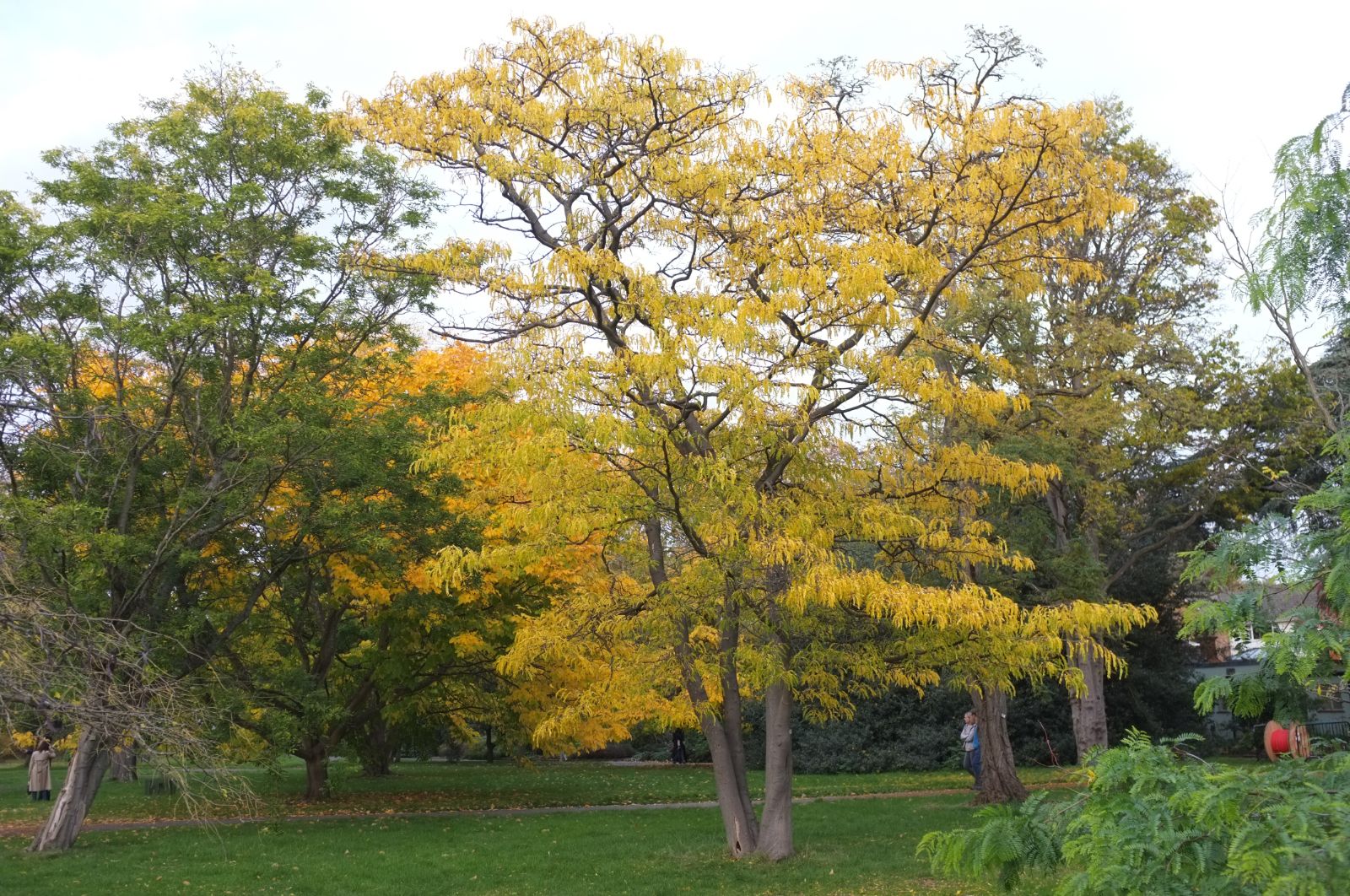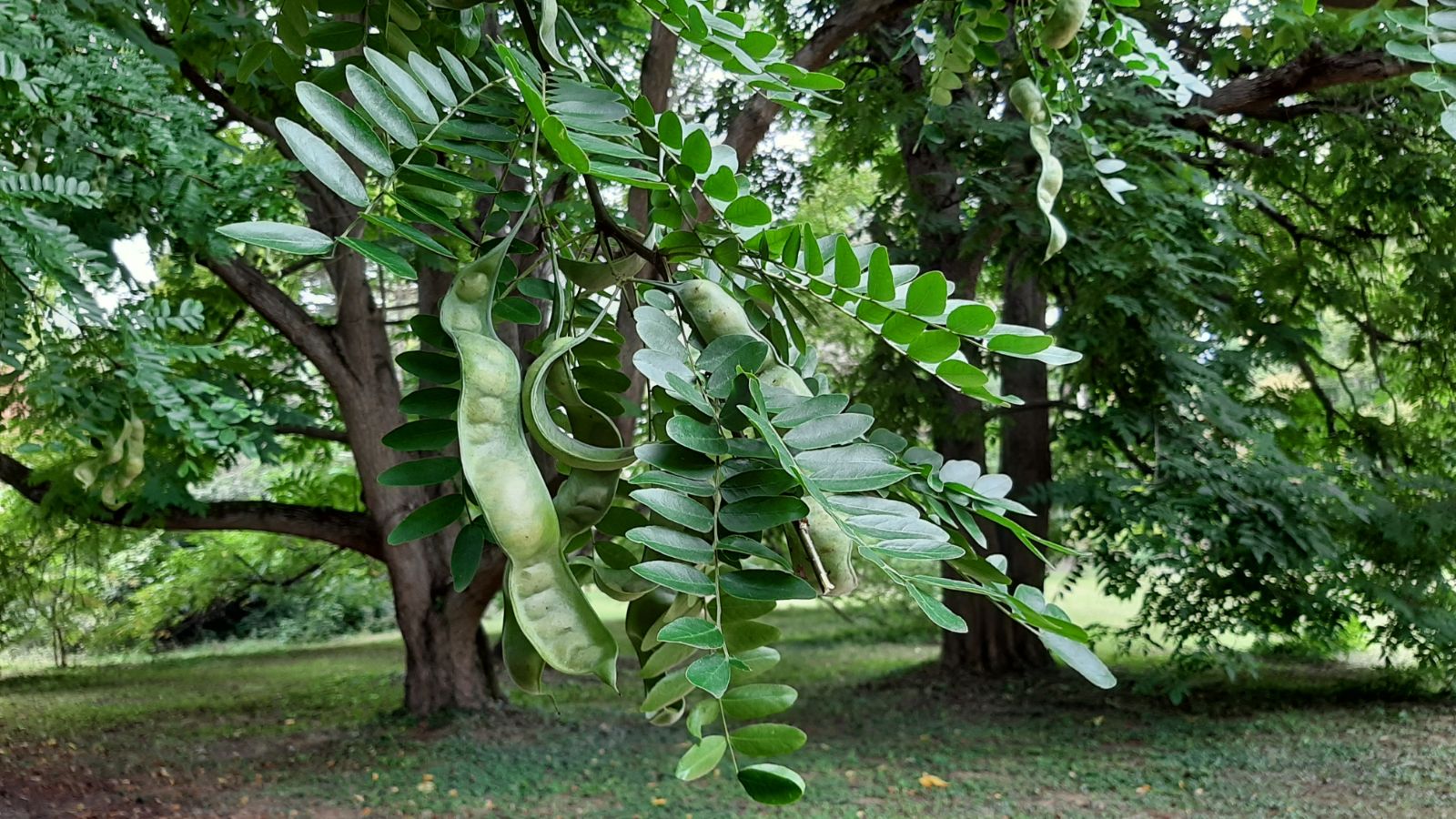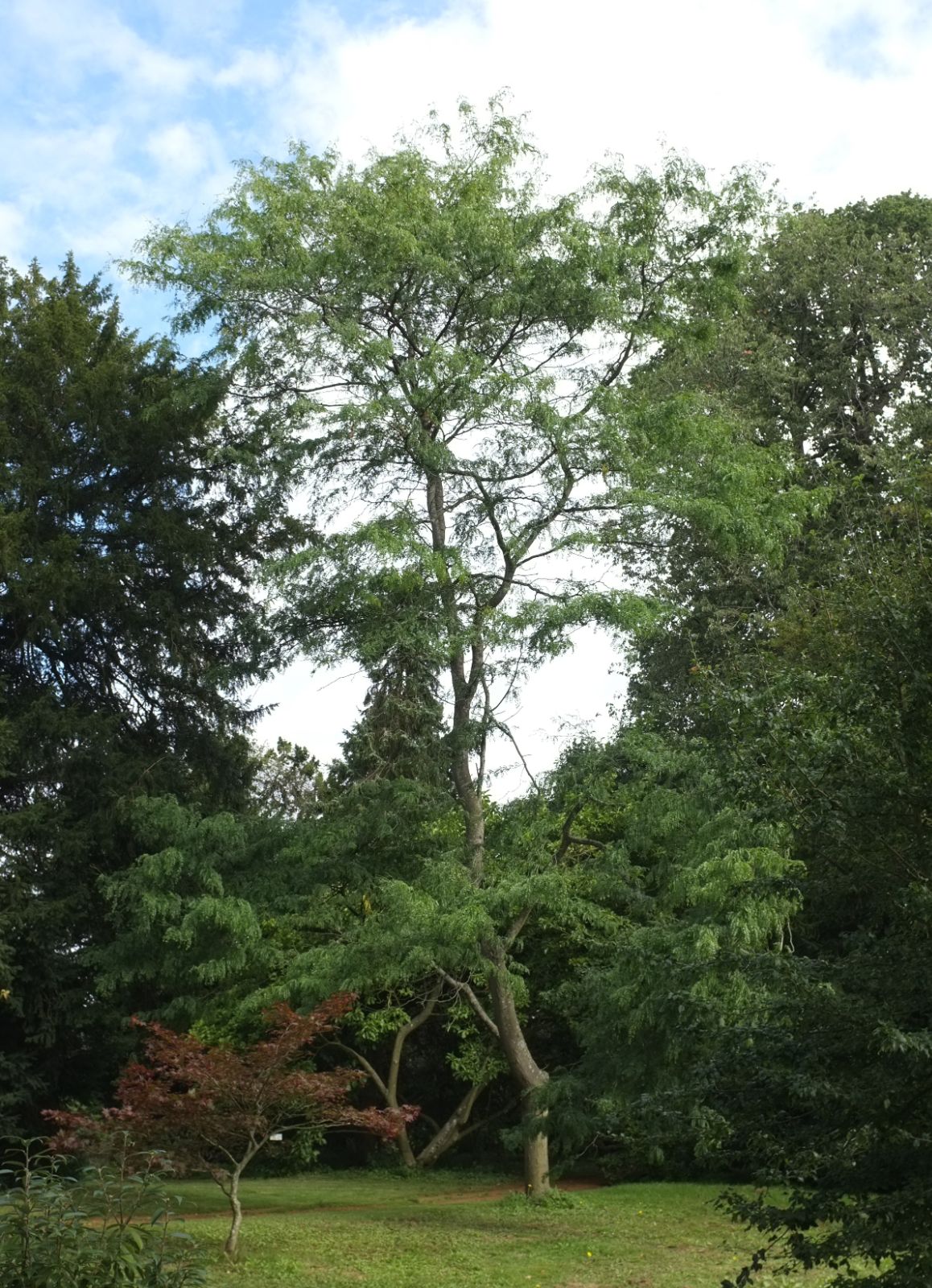Gleditsia
Credits
Article from Bean's Trees and Shrubs Hardy in the British Isles
Recommended citation
'Gleditsia' from the website Trees and Shrubs Online (treesandshrubsonline.
Family
- Leguminosae
A small group of pod-bearing, deciduous trees named in honour of Gottlieb Gleditsch, a German professor of botany, who flourished in the 18th century, and was a friend of Linnaeus. They are natives of eastern N. America, China, Japan, and Persia. The leaves are beautifully subdivided into numerous leaflets, pinnately or bipinnately arranged, and the trunks and branches of most species are more or less formidably armed with simple or branched spines. These characters of leaf and stem combined distinguish Gleditsia as a genus from all other hardy trees. No gleditsia has any beauty of blossom, the flowers being small, green, and borne in racemes a few inches long. They are sometimes perfect, sometimes unisexual, and differ from most of the Leguminosae we are familiar with in the open air in the petals being uniform, and with no resemblance to the pea-shaped blossom so characteristic of the family. The seeds are produced in pods, varying in length from 1 to 2 in. (in G. aquatica) to 20 in. long (in G. delavayi). In all except G. aquatica, G. heterophylla, and G. × texana the pods contain pulp and numerous seeds, which, however, they do not release, as most of the family do, by splitting. They often become spirally twisted before falling. The species best worth growing are G. triacanthos and G. caspica, both striking and ornamental-foliaged trees very interesting on account of their huge spines.
Gleditsias should be raised from seed. They are rather tender when young, owing to the habit of growing late in the season, so that the succulent tips are cut back in winter. After a few years the hardier species lose this defect. The cultivars of G. triacanthos are increased by grafting or budding on seedlings of the type. They like a good loamy soil and a sunny position, thriving better in the south of England, where the summers are hotter, than in the north; still better in France and Italy.

